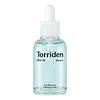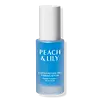What's inside
What's inside
 Key Ingredients
Key Ingredients

 Benefits
Benefits

 Concerns
Concerns

No concerns
 Ingredients Side-by-side
Ingredients Side-by-side

Water
Skin ConditioningButylene Glycol
HumectantGlycerin
HumectantDipropylene Glycol
Humectant1,2-Hexanediol
Skin ConditioningPanthenol
Skin ConditioningSodium Hyaluronate
HumectantHydrolyzed Hyaluronic Acid
HumectantSodium Acetylated Hyaluronate
HumectantSodium Hyaluronate Crosspolymer
HumectantHydrolyzed Sodium Hyaluronate
Skin ConditioningAllantoin
Skin ConditioningTrehalose
HumectantBetaine
HumectantPropanediol
SolventPortulaca Oleracea Extract
Skin ConditioningHamamelis Virginiana Extract
AntiseborrhoeicMadecassoside
AntioxidantMadecassic Acid
Skin ConditioningCeramide NP
Skin ConditioningBeta-Glucan
Skin ConditioningMalachite Extract
AntioxidantCholesterol
EmollientPentylene Glycol
Skin ConditioningGlyceryl Acrylate/Acrylic Acid Copolymer
HumectantPvm/Ma Copolymer
Emulsion StabilisingPolyglyceryl-10 Laurate
Skin ConditioningXanthan Gum
EmulsifyingTromethamine
BufferingCarbomer
Emulsion StabilisingEthylhexylglycerin
Skin ConditioningScutellaria Baicalensis Root Extract
AstringentPaeonia Suffruticosa Root Extract
Skin ProtectingWater, Butylene Glycol, Glycerin, Dipropylene Glycol, 1,2-Hexanediol, Panthenol, Sodium Hyaluronate, Hydrolyzed Hyaluronic Acid, Sodium Acetylated Hyaluronate, Sodium Hyaluronate Crosspolymer, Hydrolyzed Sodium Hyaluronate, Allantoin, Trehalose, Betaine, Propanediol, Portulaca Oleracea Extract, Hamamelis Virginiana Extract, Madecassoside, Madecassic Acid, Ceramide NP, Beta-Glucan, Malachite Extract, Cholesterol, Pentylene Glycol, Glyceryl Acrylate/Acrylic Acid Copolymer, Pvm/Ma Copolymer, Polyglyceryl-10 Laurate, Xanthan Gum, Tromethamine, Carbomer, Ethylhexylglycerin, Scutellaria Baicalensis Root Extract, Paeonia Suffruticosa Root Extract
Water
Skin ConditioningDipropylene Glycol
HumectantGlycerin
Humectant1,2-Hexanediol
Skin ConditioningBetaine
HumectantCopper Tripeptide-1
Skin ConditioningAcetyl Hexapeptide-8
HumectantPalmitoyl Tripeptide-1
Skin ConditioningTetrapeptide-21
Skin ConditioningTetrapeptide-30
Skin ConditioningHeptasodium Hexacarboxymethyl Dipeptide-12
Skin ConditioningAcetyl Tetrapeptide-5
HumectantPalmitoyl Tripeptide-38
Skin ConditioningPalmitoyl Pentapeptide-4
Skin ConditioningDipeptide-2
Skin ConditioningTripeptide-1
Skin ConditioningHexapeptide-9
Skin ConditioningNonapeptide-1
Skin ConditioningCollagen Extract
Skin ConditioningSerine
MaskingMethionine
Skin ConditioningCysteine
AntioxidantArginine
MaskingAcmella Oleracea Extract
Skin ProtectingAlpha-Glucan Oligosaccharide
CleansingSodium PCA
HumectantUlmus Davidiana Root Extract
Skin ConditioningCichorium Intybus Root Extract
MaskingHelianthus Tuberosus Root Extract
Skin ConditioningTremella Fuciformis Extract
HumectantFomes Officinalis Extract
Skin ProtectingLentinus Edodes Extract
Skin ConditioningPyrus Malus Fruit Extract
Skin ConditioningLens Esculenta Fruit Extract
Skin ConditioningCitrullus Lanatus Fruit Extract
Skin ConditioningSodium Acetylated Hyaluronate
HumectantHydrolyzed Hyaluronic Acid
HumectantHyaluronic Acid
HumectantSodium Hyaluronate
HumectantSodium Hyaluronate Crosspolymer
HumectantPotassium Hyaluronate
Skin ConditioningSqualane
EmollientFicus Carica Fruit Extract
HumectantCynanchum Atratum Extract
Skin ConditioningHydroxypropyltrimonium Hyaluronate
Ocimum Sanctum Leaf Extract
Skin ConditioningMelia Azadirachta Leaf Extract
Skin ConditioningCurcuma Longa Root Extract
MaskingCorallina Officinalis Extract
Skin ConditioningSolanum Melongena Fruit Extract
Skin ConditioningCoccinia Indica Fruit Extract
Skin ConditioningGellan Gum
Butylene Glycol
HumectantAdenosine
Skin ConditioningAloe Barbadensis Flower Extract
EmollientMelia Azadirachta Flower Extract
Skin ConditioningPolyglyceryl-10 Eicosanedioate/Tetradecanedioate
Skin ConditioningPolyquaternium-51
Skin ConditioningSodium Polyacryloyldimethyl Taurate
Emulsion StabilisingHydroxypropyl Cyclodextrin
MaskingEthylhexylglycerin
Skin ConditioningHydroxyethylcellulose
Emulsion StabilisingCaprylyl Glycol
EmollientWater, Dipropylene Glycol, Glycerin, 1,2-Hexanediol, Betaine, Copper Tripeptide-1, Acetyl Hexapeptide-8, Palmitoyl Tripeptide-1, Tetrapeptide-21, Tetrapeptide-30, Heptasodium Hexacarboxymethyl Dipeptide-12, Acetyl Tetrapeptide-5, Palmitoyl Tripeptide-38, Palmitoyl Pentapeptide-4, Dipeptide-2, Tripeptide-1, Hexapeptide-9, Nonapeptide-1, Collagen Extract, Serine, Methionine, Cysteine, Arginine, Acmella Oleracea Extract, Alpha-Glucan Oligosaccharide, Sodium PCA, Ulmus Davidiana Root Extract, Cichorium Intybus Root Extract, Helianthus Tuberosus Root Extract, Tremella Fuciformis Extract, Fomes Officinalis Extract, Lentinus Edodes Extract, Pyrus Malus Fruit Extract, Lens Esculenta Fruit Extract, Citrullus Lanatus Fruit Extract, Sodium Acetylated Hyaluronate, Hydrolyzed Hyaluronic Acid, Hyaluronic Acid, Sodium Hyaluronate, Sodium Hyaluronate Crosspolymer, Potassium Hyaluronate, Squalane, Ficus Carica Fruit Extract, Cynanchum Atratum Extract, Hydroxypropyltrimonium Hyaluronate, Ocimum Sanctum Leaf Extract, Melia Azadirachta Leaf Extract, Curcuma Longa Root Extract, Corallina Officinalis Extract, Solanum Melongena Fruit Extract, Coccinia Indica Fruit Extract, Gellan Gum, Butylene Glycol, Adenosine, Aloe Barbadensis Flower Extract, Melia Azadirachta Flower Extract, Polyglyceryl-10 Eicosanedioate/Tetradecanedioate, Polyquaternium-51, Sodium Polyacryloyldimethyl Taurate, Hydroxypropyl Cyclodextrin, Ethylhexylglycerin, Hydroxyethylcellulose, Caprylyl Glycol
 Reviews
Reviews

Ingredients Explained
These ingredients are found in both products.
Ingredients higher up in an ingredient list are typically present in a larger amount.
1,2-Hexanediol is a synthetic liquid and another multi-functional powerhouse.
It is a:
- Humectant, drawing moisture into the skin
- Emollient, helping to soften skin
- Solvent, dispersing and stabilizing formulas
- Preservative booster, enhancing the antimicrobial activity of other preservatives
Betaine is a common humectant (a substance that promotes retention of moisture). It's known to be gentle on the skin and can help balance hydration.
This ingredient is best for improving hydration and soothing irritated skin. Studies also show it helps even out skin tone.
Fun fact: Betaine is naturally created in the skin and body. The kind found within cosmetic products can be either plant-derived or synthetic.
Another name for betaine is trimethylglycine.
Learn more about BetaineButylene Glycol (or BG) is used within cosmetic products for a few different reasons:
Overall, Butylene Glycol is a safe and well-rounded ingredient that works well with other ingredients.
Though this ingredient works well with most skin types, some people with sensitive skin may experience a reaction such as allergic rashes, closed comedones, or itchiness.
Learn more about Butylene GlycolDipropylene Glycol is a synthetically created humectant, stabilizer, and solvent.
This ingredient helps:
Dipropylene glycol is technically an alcohol, but it belongs to the glycol family (often considered part of the ‘good’ alcohols). This means it is hydrating and gentle on skin unlike drying solvent alcohols like denatured alcohol.
As a masking agent, Dipropylene Glycol can be used to cover the smell of other ingredients. However, it does not have a scent.
Studies show Dipropylene Glycol is considered safe to use in skincare.
Learn more about Dipropylene GlycolEthylhexylglycerin (we can't pronounce this either) is commonly used as a preservative and skin softener. It is derived from glyceryl.
You might see Ethylhexylglycerin often paired with other preservatives such as phenoxyethanol. Ethylhexylglycerin has been found to increase the effectiveness of these other preservatives.
Glycerin is already naturally found in your skin. It helps moisturize and protect your skin.
A study from 2016 found glycerin to be more effective as a humectant than AHAs and hyaluronic acid.
As a humectant, it helps the skin stay hydrated by pulling moisture to your skin. The low molecular weight of glycerin allows it to pull moisture into the deeper layers of your skin.
Hydrated skin improves your skin barrier; Your skin barrier helps protect against irritants and bacteria.
Glycerin has also been found to have antimicrobial and antiviral properties. Due to these properties, glycerin is often used in wound and burn treatments.
In cosmetics, glycerin is usually derived from plants such as soybean or palm. However, it can also be sourced from animals, such as tallow or animal fat.
This ingredient is organic, colorless, odorless, and non-toxic.
Glycerin is the name for this ingredient in American English. British English uses Glycerol/Glycerine.
Learn more about GlycerinHydrolyzed Hyaluronic Acid is a form of hyaluronic acid. It is created by the hydrolysis of hyaluronic acid with a high molecular weight. Once created, Hydrolyzed Hyaluronic Acid has a low molecular weight.
Low molecular weight HA has been shown to hydrate and increase elasticity of the skin. Increasing elasticity is also associated with reduction of wrinkle depth.
One study found topical low molecular weight hyaluronic acid may be considered for the treatment of rosacea in the adult population. However, we always recommend speaking with a professional about your skin concerns.
Hyaluronic acids are a humectant. This means they draw moisture from the air. Hyaluronic acids help moisturize, soothe, and protect the skin.
Read more about other common forms of hyaluronic acid:
Learn more about Hydrolyzed Hyaluronic AcidSodium Acetylated Hyaluronate is a type of Hyaluronic Acid.
Hyaluronic Acids help moisturize, soothe, and protect the skin.
Read about common types of Hyaluronic Acid here:
Sodium Hyaluronate
Hydrolyzed Hyaluronic Acid
Hyaluronic Acid
Sodium Hyaluronate is hyaluronic acid's salt form. It is commonly derived from the sodium salt of hyaluronic acid.
Like hyaluronic acid, it is great at holding water and acts as a humectant. This makes it a great skin hydrating ingredient.
Sodium Hyaluronate is naturally occurring in our bodies and is mostly found in eye fluid and joints.
These are some other common types of Hyaluronic Acid:
Learn more about Sodium HyaluronateSodium Hyaluronate Crosspolymer is a type of hyaluronic acid. In fact, it is modified version of hyaluronic acid.
The structure of Sodium Hyaluronate Crosspolymer allows it to stay in the skin's top layer for a longer period of time. This allows for even more hydration and humectant action than hyaluronic acid.
These are some other common types of Hyaluronic Acid:
Learn more about Sodium Hyaluronate CrosspolymerWater. It's the most common cosmetic ingredient of all. You'll usually see it at the top of ingredient lists, meaning that it makes up the largest part of the product.
So why is it so popular? Water most often acts as a solvent - this means that it helps dissolve other ingredients into the formulation.
You'll also recognize water as that liquid we all need to stay alive. If you see this, drink a glass of water. Stay hydrated!
Learn more about Water